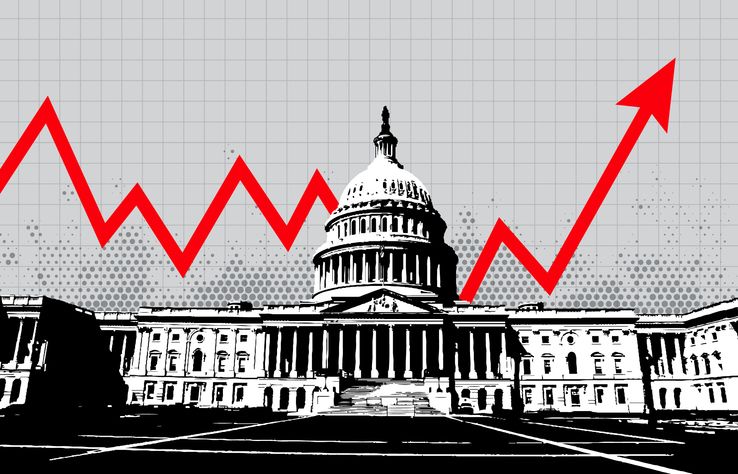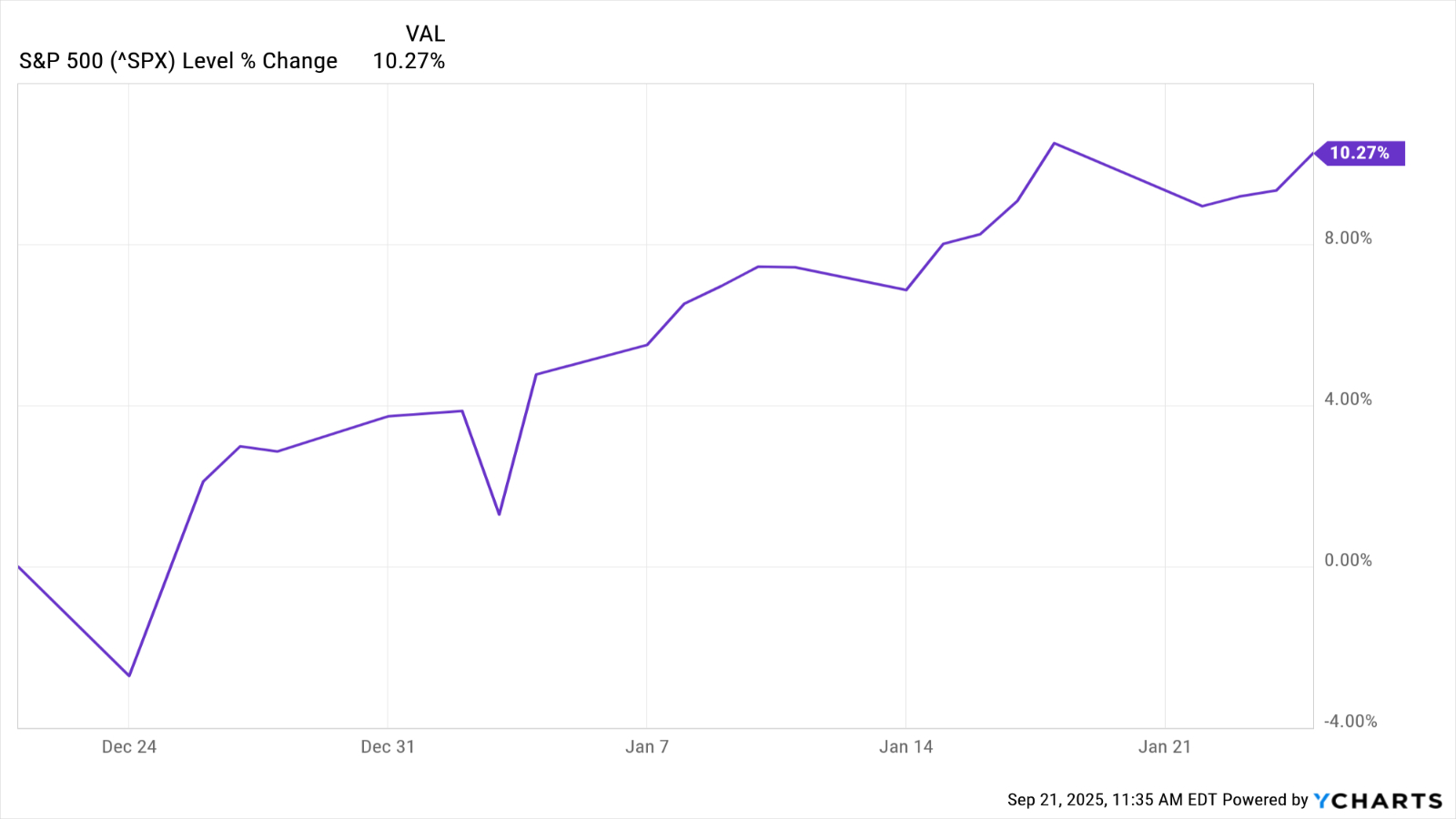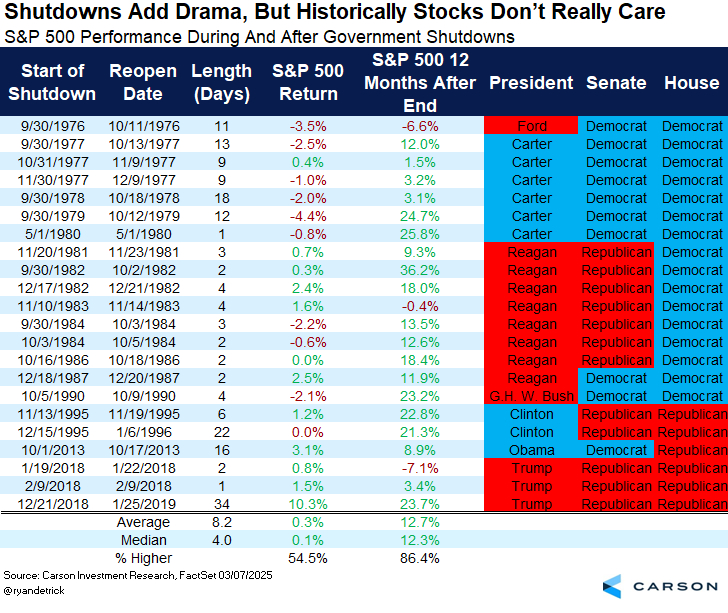
Federal government shutdowns aren't bad for stocks, at least historically speaking.
Although the market hates the threat of a federal government shutdown, the S&P 500's performance during past shutdowns has been pretty good.
If our latest government shutdown, which went into effect at 12:01 am Eastern Standard Time on October 1, seems particularly irksome, it may be because markets are trading at record levels – and rich valuations – despite the effects of tariffs, sticky inflation and a softer labor market. No one wants dysfunction in Washington to mess with success.
After all, September is historically the worst month for stocks. And yet the market didn't get the memo this year. The S&P 500 finished September up 3.7% on a total return basis (price change plus dividends), continuing its remarkable 33% rally off the April low.
The Federal Reserve's rate cut – and forecasts for additional reductions later this year and in 2026 – are boosting the bull market, as is optimism over the upcoming earnings season.
Stock performance during government shutdowns
Happily, for market participants, the historical record for stocks when the federal government shuts down is far from one of doom and gloom.
There have been 22 government shutdowns since 1976, not including this one, but on only four occasions were operations affected for more than one business day, writes Jeffrey Buchbinder, chief equity strategist at LPL Financial. That leaves us with only four "true" shutdowns, Buchbinder notes, the last occurring in late 2018 into early 2019.
It's tough to remember now, but the S&P 500 returned 10.3% during the 35-day shutdown of 2018-2019. Have a look at the chart below:

Stocks did fine during the extended shutdown of October 2013 too.
"Historically, markets were not materially impacted by a shutdown," Buchbinder says. "For example, in 2013, the government was shut down for 16 days during the first part of October. The S&P 500 had some down days but overall, the equity market took all the political drama in stride with a 3.1% advance during those 16 days."
It's sort of counterintuitive, but in past government shutdowns, the S&P 500 rose 55% of the time, generating an average return of 0.3%, according to data from Carson Group.
Even better, 12 months after the end of the shutdown, the S&P 500 was higher 86% of the time, with an average return of 12.7%.

"The good news is history says shutdowns have little to no effect on stocks," writes Carson Group Chief Market Strategist Ryan Detrick. "Most shutdowns last only a few days, so just enough to get in the headlines and then it is over just as quickly."
Past performance is no guarantee of future results, but the record for stocks in government shutdowns is almost encouraging.
When the last federal government shutdown ended in 2019, the S&P 500 went on to return almost 24% over the next 12 months. There are probably plenty of market participants who would take that deal again.
Related content
- How Social Security Would Be Affected By A Government Shutdown
- What A Government Shutdown Means For Student Loan Payments
- A Government Shutdown Could Disrupt Your Travel Plans — Eventually
- How Medicare Would Be Affected By A Government Shutdown
- Government Shutdown to Delay Data, Including Key Jobs Report







